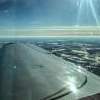Water puddling outboard of extended tanks
-
Members Online
- Captnmack
- NickG
- Ragsf15e
- dzeleski
- Aaviationist
- LP1
- CCAS
- Marc_B
- 47U
- UteM20F
- mooniac58
- Fritz1
- wombat
- TravelingIA98
- LOCOLJ
- WilliamR
- eman1200
- hypertech
- shawnd
- mluvara
- Matthew P
- haymak3r
- adverseyaw
- DanM20C
- redbaron1982
- Rmfriday
- BrentS
- AviH
- ProtoFly
- patriot3300
- RangerM20
- slowflyin
- 201er
- hazek
- TheAv8r
- Aerospace
- warren.huisman
- DonMuncy
- Trebor
- Kelpro999
- LANCECASPER
- Trogdor
- 201guy
- ElkoRandy20J
- affricate
- KSMooniac
- Kirch56H


Recommended Posts
Join the conversation
You can post now and register later. If you have an account, sign in now to post with your account.